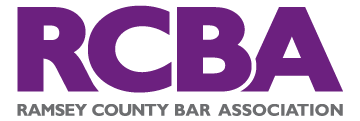There are several types of letters and agreements that business people use over the course of a transaction. Likewise, there is an array of terminology that accompanies these devices. It can be difficult to keep everything straight, but it is important to be able to correctly identify what type of communication or agreement you are dealing with. For example, it is crucial to understand when something is legally binding. Moreover, having a firm grasp on the tools of business discourse will improve your negotiation skills. Some common types of letters and agreements are outlined below. These are general conceptions, and the terms below are often used synonymously with each other. Likewise, the legality of a document is highly dependent on individual circumstances. The hope of this blog is to introduce you to some common terminology and tools in transactional practice.
Indication of interest: An indication of interest is a formal, non-binding letter that a buyer drafts in order to express their interest to a seller. A buyer may draft a letter indicating their interest before drafting a letter of intent. Indications of interest are less comprehensive than letters of intent, but they may still contain a purchase price and which assets, property, or business the buyer is interested in. A seller may collect many of these proposals and determine which parties they want to engage in negotiations.
Letter of intent: Letters of intent express the intent of buyers and serve as a roadmap for the transaction. Like a term sheet, a letter of intent will contain a purchase price, any deal breakers, and other key conditions. A letter of intent may go into greater detail than an indication of interest or term sheet on various terms. The provisions of a letter of intent are typically non-binding unless an individual provision states otherwise. For example, a letter of intent could have a legally binding exclusivity provision, which would make the drafter the sole prospective buyer. Ultimately, many terms of a transaction are not final at this stage and will continue to be negotiated.
Term sheet: A term sheet is a non-binding agreement that sets out the basic premises of a transaction. Parties use term sheets to agree in principle on the terms of a transaction. The purchase price, structure, and fundamental terms and conditions of a transaction are included in a term sheet in a bullet point format. A term sheet may also contain a confidentiality provision, which could protect the information in the term sheet from being shared with third parties or employees of the seller.
Memorandum of understanding: A memorandum of understanding is similar to a term sheet in that it is typically not legally binding and it sets out the central terms of a proposed transaction, such as the purchase price and structure of a deal. A memorandum of understanding differs from a term sheet in that it is written in the form of a memorandum instead of bulleted terms. For this reason, term sheets may be more readily converted to formal contracts. Parties often use memoranda of understanding to articulate what will practically happen in the deal. The process of writing these memoranda may yield some clarity for both sides.
Non-binding offer or indicative offer: A non-binding offer, also referred to as an indicative offer, essentially allows parties to agree in principle to eventually make a deal. They are similar to term sheets in this sense, but likely will occur earlier in the negotiation process and may not be as comprehensive. These offers commonly reference a purchase price, timeline, and the prospect of a final agreement. Moreover, they cannot be relied upon further into negotiations, but do offer sellers a snapshot of what a buyer is thinking at an early stage. Further, although not legally binding, non-binding/indicative offers can serve as a tool for moving negotiations further along at various points in negotiations.
Purchase agreement: A purchase agreement is a legally binding contract. The agreement contains the final terms of the transaction, such as the final purchase price, representations and warranties, closing details, covenants, conditions to closing, indemnification provision, and termination provision. Further, a letter of intent usually precedes a purchase agreement in complex transactions like mergers and acquisitions. Purchase agreements are used to finalize transactions.
Business people should be familiar with these devices and the relevant terminology, but business attorneys also play a critical role in this area. Vlodaver Law Offices, LLC has advised on transactions of many types and sizes. If you could use assistance in a transactional matter, feel free in giving us a call 651-690-9906 to discuss. Our job is to provide you smart and effective business legal guidance.












